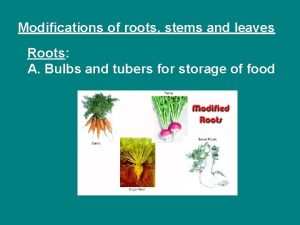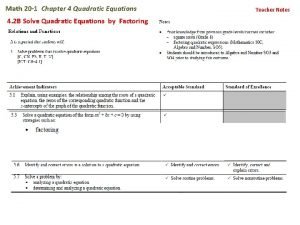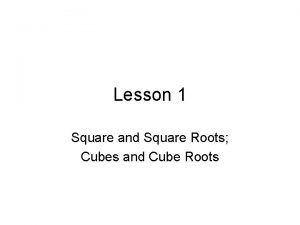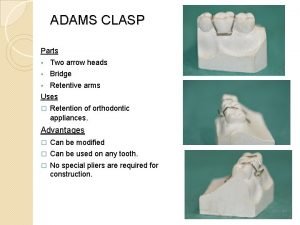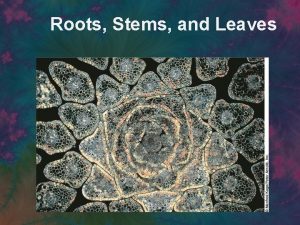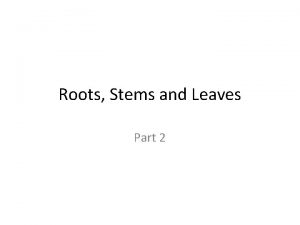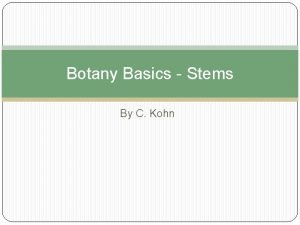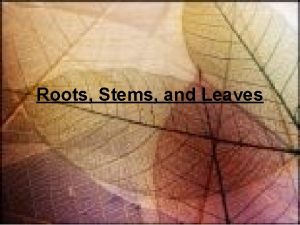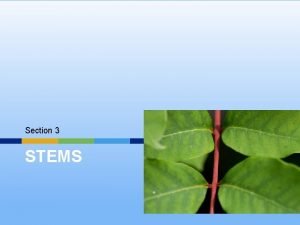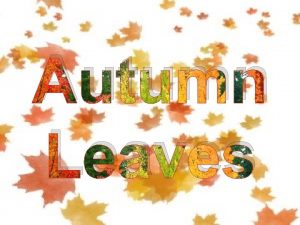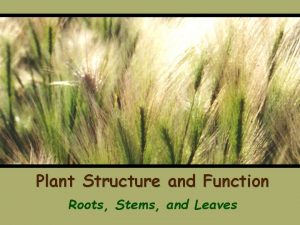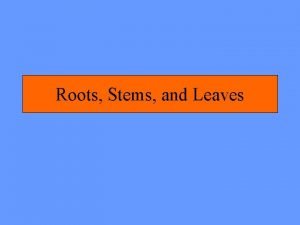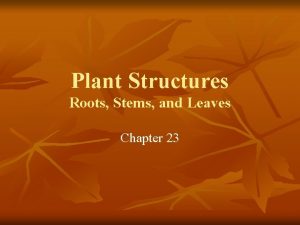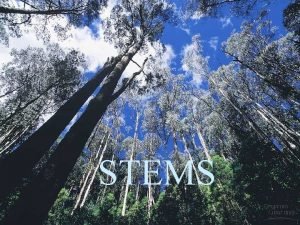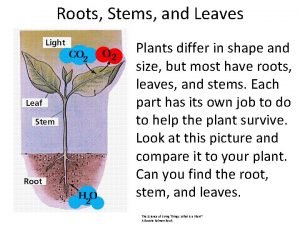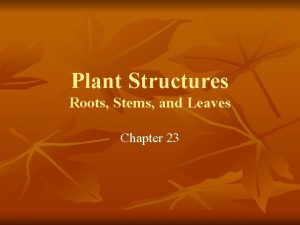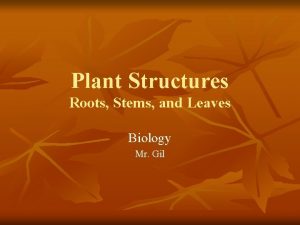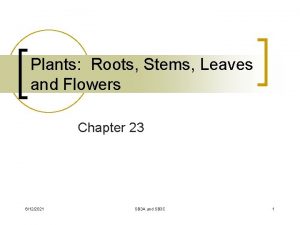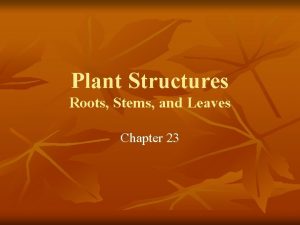Modifications of roots stems and leaves Roots A





















- Slides: 21

Modifications of roots, stems and leaves Roots: A. Bulbs and tubers for storage of food

B. Prop roots: Provide additional anchorage and support for the plant. Corn

C. For vital functions: • Haustoria or sucking roots of Cuscuta Get nutrients from the host plant

• Respiratory roots or Pneumatophores Spongy outgrowths of roots below. Help gases diffuse through pores on the upper end of the roots

• Floating roots – help plant float and also with respiration.

• Aerial roots - Not parasitic Help absorb moisture from the air and make it available to the plant.

2. Stems: A. Storage of food – Example tubers in potatoes, Sweet potatoes B. Bulbs in onions

• Corms in Crocus:

B. For climbing:

C. Asexual reproduction Stolon

D. Cladodes or cladophylls: Stem Store water and help the plant with photosynthesis

3. Leaves: • Modified to spines or thorns for protection against predators and to minimize water loss through transpiration.

Thick cuticle to store water such as the Agave plant found in the desert.

• Pine trees have needle-like leaves to adapt to the cold climate. Thick waxy epidermis protects from cold damage. Sunken stomata reduce water loss.

Adhesive disc/Hold fast – use for climbing. Example – Boston ivy

• Specialized, highly colored leaf below the flower to lure pollinators. Called a bract. Example: Poinsettia and dogwood Floral bracts Flower


Thorns – Protection – Example Roses, Pyracantha

Tendrils – Used for climbing or to attach to objects. Example: Virginia creeper, Peas, Grapes

Leaves modified to lure, trap and digest insects. Examples: Pitcher plant, Venus fly trap, Drosera Insects provide extra nitrogen to the plants. http: //natgeotv. com/ca/built-for-the-kill/videos/plants_eating_bugs

Succulent leaves – Lithops ‘ Living stones’
 Modified stems and roots
Modified stems and roots Function of stems
Function of stems Functions of the leaves
Functions of the leaves Eats roots shoots and leaves joke
Eats roots shoots and leaves joke Things that have roots
Things that have roots Leaves branches trunk and roots song
Leaves branches trunk and roots song Existence and uniqueness of square roots and cube roots
Existence and uniqueness of square roots and cube roots Accommodations and modifications
Accommodations and modifications Difference in accommodations and modifications
Difference in accommodations and modifications Difference in accommodations and modifications
Difference in accommodations and modifications Square root 1 to 100
Square root 1 to 100 Quadratic equation with roots
Quadratic equation with roots Perfect squares list
Perfect squares list Blackhawk king air 350
Blackhawk king air 350 C clasp parts
C clasp parts Tableau de transformation discours direct et indirect pdf
Tableau de transformation discours direct et indirect pdf Cummer classification of partial denture
Cummer classification of partial denture Accommodations vs modifications chart
Accommodations vs modifications chart Vanessa jason biology roots
Vanessa jason biology roots Economic roots of american imperialism
Economic roots of american imperialism Herbacious stems
Herbacious stems Stems list 1
Stems list 1
